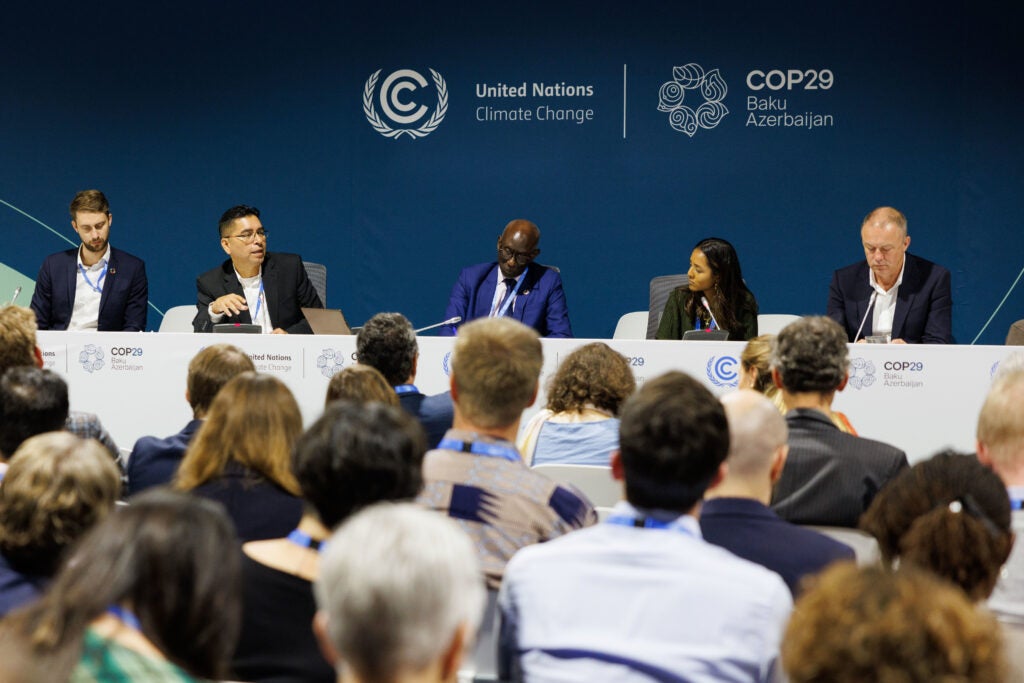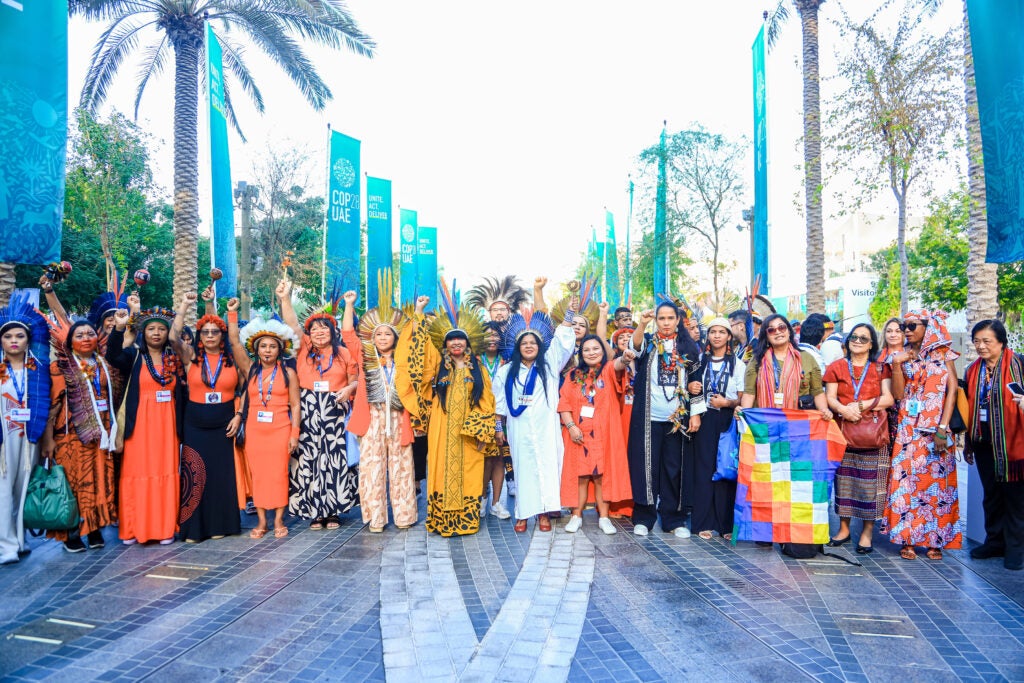
Juan Carlos Jintiach from the Global Alliance of Territorial Communities, speaking on direct access to finanance for Indigenous People at COP29. Photo by Bärbel Henneberger.
This post was authored by Bärbel Henneberger, Senior Partnerships Manager at the Environmental Defense Fund.
On November 21, COP29 celebrated Indigenous Peoples and Local Communities (IP and LCs) as a thematic day in the Action Agenda of the Azerbaijani COP presidency. The day underscored the essential role of IP and LCs in safeguarding 80% of the world’s biodiversity and preserving 36% of intact forest landscapes.
To succeed in the fight against climate change, we must collaborate with IPs and LCs and respect their principles, culture, and methods while providing the support they need to further our shared conservation goals. We won’t succeed in conserving tropical forests without the partnership and leadership of IPs and LCs.
Climate conferences like COP29 offer a platform for IP and LCs to amplify their voices, and shape negotiations. It’s an opportunity for them to show the world how their efforts to conserve and sustainably manage their territories, which are some of Earth’s most important ecosystems, are critically important in the climate fight.
At COP29, IP and LC delegates spotlighted examples of effective participation in negotiations, policy frameworks, and innovative climate finance mechanisms. These efforts, though diverse, share a common goal: to embed Indigenous rights and knowledge systems into global climate action. Below are a few examples of Indigenous approaches to conservation efforts showcased during COP29. Critically, the world must continue to support, and learn from, these approaches well after the negotiations in Baku have ended.
Spotlight on LCIPP and the IP Caucus














